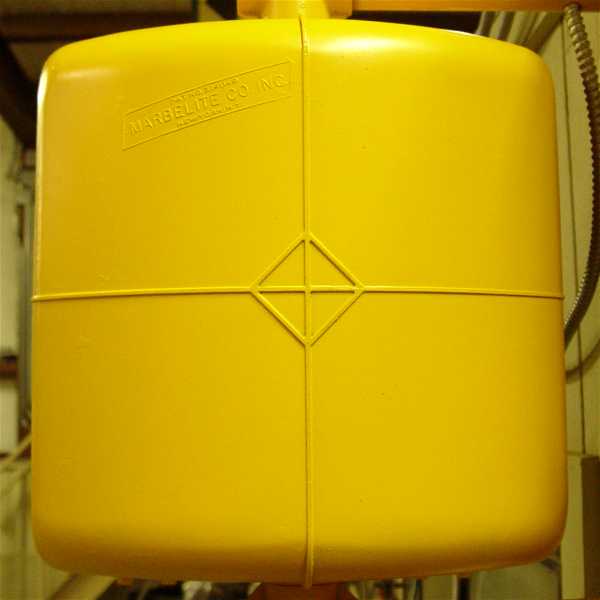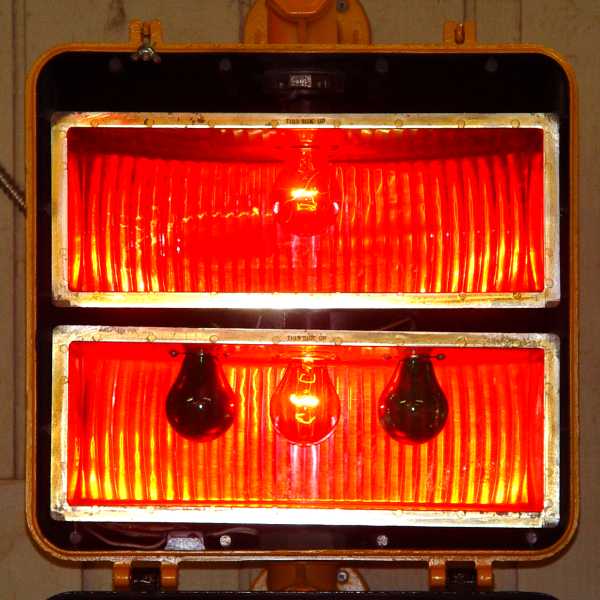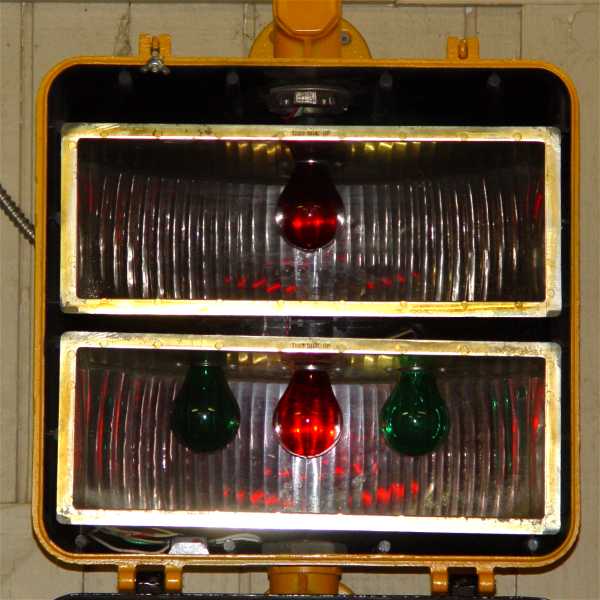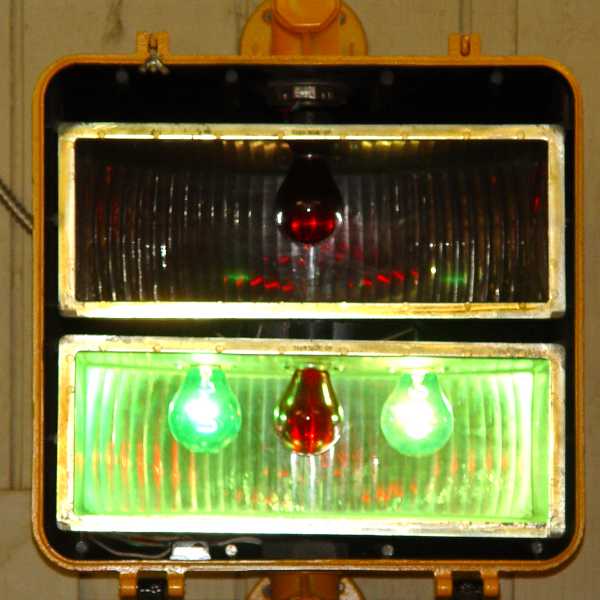Side view of the signal housing.
|
"WALK" indication.
|
|
The LPS-20 was manufactured with clear ripple glass lettered lenses that were illuminated colored bulbs. Typical colors used were either red "WAIT" and green "WALK," or Portland orange "WAIT" and white "WALK."
A unique feature of this signal and a few others that were manufactured like it was that the red bulbs were special 60 or 65 volt bulbs as compared with conventional 120 volt bulbs, and they were wired in series. The idea here was that if either bulb burned out, both would go dark. That way if the "DONT" bulb failed, the signal wouldn't light only with a red "WALK" indication. |
Back view of housing.
|
Colored bulb layout.
|
|
The details of the lenses in this signal can be better viewed if you click on an image (above) and bring up a larger copy. The LPS-20 signal later came with optional fiberglass lenses that were more vandal resistant.
This particular signal came from New York City (Brooklyn, I'm told) and it still had the NYC property decal inside.

Continue to Highway-Signal and Sign Co.Return to Last Marbelite SignalReturn to Signals Page |






